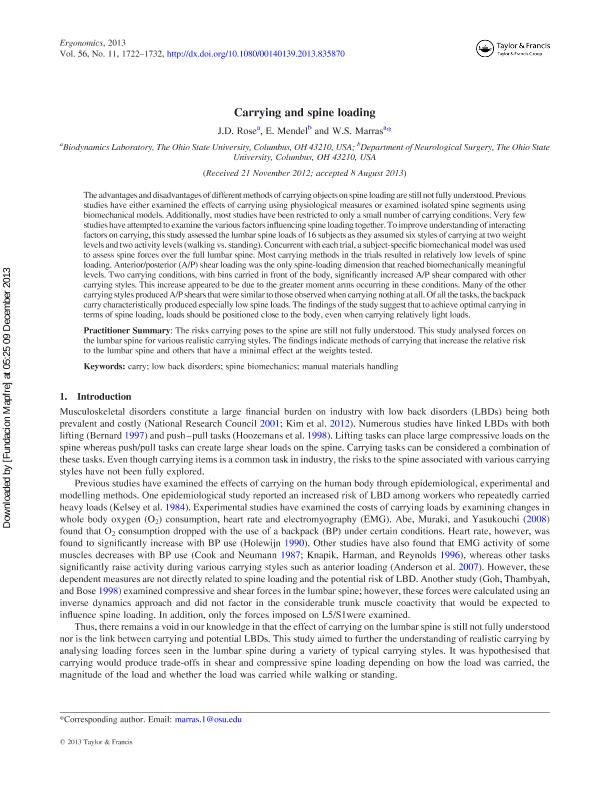Carrying and spine loading

Contenido multimedia no disponible por derechos de autor o por acceso restringido. Contacte con la institución para más información.
| Tag | 1 | 2 | Valor |
|---|---|---|---|
| LDR | 00000cab a2200000 4500 | ||
| 001 | MAP20130041292 | ||
| 003 | MAP | ||
| 005 | 20131210102159.0 | ||
| 008 | 131209e20131104esp|||p |0|||b|spa d | ||
| 040 | $aMAP$bspa$dMAP | ||
| 084 | $a875 | ||
| 100 | 1 | $0MAPA20130017716$aRose, J.D. | |
| 245 | 1 | 0 | $aCarrying and spine loading$cJ.D. Rose, E. Mendel, W.S. Marras |
| 520 | $aThe advantages and disadvantages of different methods of carrying objects on spine loading are still not fully understood. Previous studies have either examined the effects of carrying using physiological measures or examined isolated spine segments using biomechanical models. Additionally, most studies have been restricted to only a small number of carrying conditions. Very few studies have attempted to examine the various factors influencing spine loading together. To improve understanding of interacting factors on carrying, this study assessed the lumbar spine loads of 16 subjects as they assumed six styles of carrying at two weight levels and two activity levels (walking vs. standing). Concurrent with each trial, a subject-specific biomechanical model was used to assess spine forces over the full lumbar spine. Most carrying methods in the trials resulted in relatively low levels of spine loading. Anterior/posterior (A/P) shear loading was the only spine-loading dimension that reached biomechanically meaningful levels. Two carrying conditions, with bins carried in front of the body, significantly increased A/P shear compared with other carrying styles. This increase appeared to be due to the greater moment arms occurring in these conditions. Many of the other carrying styles produced A/P shears that were similar to those observed when carrying nothing at all. Of all the tasks, the backpack carry characteristically produced especially low spine loads. The findings of the study suggest that to achieve optimal carrying in terms of spine loading, loads should be positioned close to the body, even when carrying relatively light loads. | ||
| 773 | 0 | $wMAP20100019818$tErgonomics : the international journal of research and practice in human factors and ergonomics$dOxon [United Kingdom] : Taylor & Francis, 2010-$x0014-0139$g04/11/2013 Volumen 56 Número 11 - noviembre 2013 |

